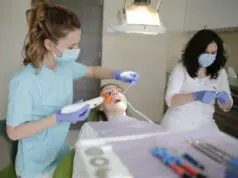
With the opioid epidemic devastating communities across the U.S., the demand for effective treatment has skyrocketed. Suboxone’s treatment, in particular, has become a promising solution to help reduce cravings and aid with dependence. It is marketed as more effective and less addictive than Methadone, the previous golden standard in medication maintenance for opioid addiction.
Yet, while there are many benefits to Suboxone treatment, it has the frustrating drawback of sometimes being hard to access. So why is access to this substance such a concern and how can an individual with an opioid addiction find this life-changing treatment?
For more information on Suboxone treatment or to find a provider, visit addictiontreatmentmagazine.com.
The Importance of Opioid Treatment
Before diving into why finding a subxone doctor is so challenging, let’s discuss why access to suboxone treatment matters. While opioid abuse is not something new, the magnitude of the issue is relatively new. The rise began back in 1999, but in just the past 10 years, we saw an exponential increase in the number of opioid related overdoses – most of which were tied to synthetic opioids. Opioid overdose has become one of the leading causes of accidental death in the United States (according to the CDC, more than 760,000 people have died from opioid overdoses since 1999). It is widely believe that this epidemic was sparked by the over prescription of synthetic opioids for pain management. Our medical community has a duty to address the epidemic that they largely contributed to causing in the first place.
What is Suboxone?
Suboxone is the brand name for burprenorphine naloxone, a prescription medication used to treat individual with an opioid dependence. It is most commonly prescribed in a dissolvable sublingual sheet but is occasionally available in other forms. Suboxone is a partial opioid agonist that helps prevent opioid withdrawal symptoms and cravings from occuring, therefore elemininating one of the major reasons why those dependent on opioids struggle to stop using. However, if the medication is abused (for instance, if it was injected intravensouly), the user would experience withdrawal symptoms. This consequence for abuse is the negative reenforcement that Methadone does not offer and what is what reduces the risk of developing Suboxone addiction.
3 Limitations to Suboxone Treatment Access

Not Enough Doctors Are Trained To Prescribe Suboxone
While the need for Suboxone treatment is high, the number of doctors who can prescribe the medication is slim. To prescribe drugs like buprenorphine—a staple of suboxone treatment—sufficient doctors have to be medically trained. Of the 900,000 doctors in the U.S. who are eligible to be licensed to prescribe opioids, only about 31,000 have become certified and only about ⅓ of those physicians actually do actively prescribe Suboxone for the patients.
Currently, the need from high-risk communities outnumbers the providers as licensing requirements often enforce doctors from certain group practices to maintain a patient limit. Mental and behavioral conditions also need treatment alongside physical dependency treatment, which requires more time and resources. This makes it difficult for providers to even attend to the 100 patients allowed at a time and sets a clear limit to the number of individual who can receive treatment at once.
Limited Insurance Coverage
Due to the already limited numbers of providers available, the cost of Suboxone treatment can either be expensive. Depending on your insurance plan, there might be undefined terms of restrictions regarding dosages, coverage costs, and the number of in-office visitations. Another possibility is that your insurance doesn’t cover this treatment option at all.
A large number of people seeking treatment are also under Medicaid. Since Medicaid payments tend to be lower than what providers charge, Medicaid members’ access to Suboxone providers can be severely limited.
There are also people who struggle with opioid addiction that do not have any medical insurance coverage at all. Although prescription discount programs might help, the doctors office visits and prscription costs may be prohibitive.
Stigma

Unfortunately, some providers are reluctant to become involved with opioid addiction treatment due to the stigma around addiction and medication-assisted treatment. Aside from the constant scrutiny of government law enforcement, it also requires more work for providers to track their patients over the long term. They may be concerned that their practice’s image may be looked at differently if they are providing opioid treatment. Patients who come in for other conditions may not like the idea of going to an office where “addict” also go.
Treating these patients also requires doctors to seek further in-depth training, certification, and a waiver from the federal government. Those factors and the longer treatment schedule needed for those suffering from opioid addiction can prevent some providers from wanting to administer treatment. Doctors may ask themselves “do I want to be a Suboxone doctor”?
These are all realities tied to the stigma of addiction.
Can searching be easier?
The good news is that there are already regional efforts underway to address these issues and increase access to medication assistance for opioid addiction and dependence. For example, the University at Buffalo’s Research Institute on Addictions has spearheaded a local program that trains providers for communities with higher addiction rates in New York State.
As local efforts become more prominent, it will make it easier for those in need to find a licensed medical professional to treat them or their loved one. Also, the more doctors that take the training and get licensed to prescribe Suboxone, the more mainstream and accepted the practice may become. To have a better search result, you can follow these tips:
- Contact your medical insurance directly. You can ask by phone about providers who deal with opioid addiction treatment. Many of their websites have virtual assistants or provider search tabs where you can manually search too.
- If you have Medicaid, search your state + Medicaid for their site’s listings of centers and providers who offer treatment services.
- If you have Medicare, you can search Medicare.gov for their list of opioid treatment programs under their plans.
- Search online directories with lists of physicians who are currently accepting Subxone clients in a specific geographical area.













